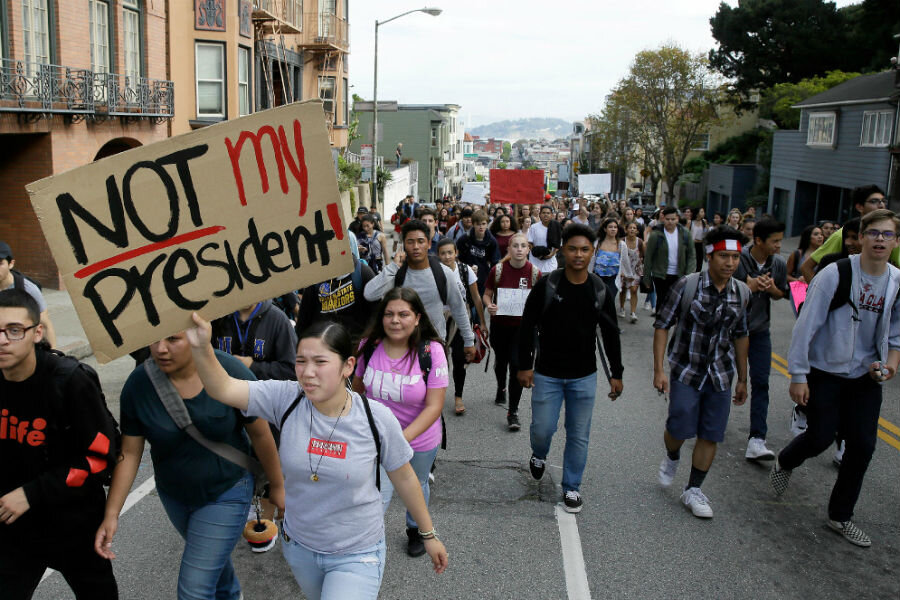California revives talk of secession with #Calexit, but it’s not the only one
Loading...
Once again, the idea of a California secession emerged on Wednesday as the hashtag #Calexit trended on social media.
While some users may have merely used it as a medium to express their frustrations at the election results on Tuesday, the fringe movement calling for independence of California has actually existed for years, drawing support from some Californians who feel that their ideologies have diverged from the rest of the country so much that it has stalled their progress.
“In our view, the United States of America represents so many things that conflict with Californian values, and our continued statehood means California will continue subsidizing the other states to our own detriment,” wrote Yes California, a grass-roots organization that is hoping to put the issue on the 2019 ballot, in a statement. “California could do more good as an independent country than it is able to do as a just a US state.”
But a look back at modern history reveals that California’s secession movement is not an anomaly. In fact, in 2012 after President Obama’s reelection, the White House was flooded with secession petitions from many conservative Deep South states, including Florida, Georgia, and North Carolina. While a secession succeeding may be unlikely, the increasing intensity, some scholars say, should be noted for serving as a warning sign of growing polarization – one that signifies a disconnect between federal and state or local politics in some corners of the country.
“We didn’t have much talk about secession until 15 years ago ... we’ve seen further growth in support for secession,” Jason Sorens, department of government lecturer at Dartmouth College in Hanover, N.H., tells The Christian Science Monitor in a phone interview. Sorens is also the founder of the Free State Project, a libertarian group in New Hampshire. “I do think that voters have sorted more clearly into two parties and have ideologically diverged and created more alienation from the federal government.”
According to Dr. Sorens, secession movements gained momentum in the 2000s, when voters rebelled against issues such as the military prison at Guantánamo Bay and the war in Iraq. Subsequent years saw support for secession alternating between parties, with liberals most likely to view it favorably when the conservative party holds the presidential seat and vice versa.
“They probably feel powerless and maybe fearful about what the federal government will do,” he says.
A Reuters poll from 2014 aligned with his view: Secession gained support from more Republicans than Democrats that year, from those in lower rather than higher-income brackets, and particularly in the Southwest followed by the Rockies.
The risks of an actual secession occurring may be small given the hurdles that would have to be overcome. This includes amending the US Constitution and gaining support from two-thirds of the legislature, a feat that may not be popular – after all, who would want to let California, the nation’s biggest economy, leave United States?
But the surprising unification by those who feel pushed to the margins is in large part what drove the unexpected results of this election cycle.
“The United States hardly seems to be on the verge of fracture, and the small secession movements in a handful of American states today represent a tiny percentage of those polled by Reuters,” Jim Gaines, Reuters global editor-at-large wrote back in 2014 when the poll was released. “But any country where 60 million people declare themselves to be sincerely aggrieved – especially one that is fractious by nature – is a country inviting either the sophistry of a demagogue or a serious movement for reform.”
New Hampshire and Vermont are two states with secessionist movements that voiced out most recently after Brexit, with the latter calling the central government “too unresponsive to the needs of individual citizens and small communities,” as reported by Politico. Texas is also notorious for threatening a split from the country.
The solid-blue California has seen attempts to secede or split into different states dating back to at least the 1920s. The state takes itself seriously as a leader in issues especially pertaining to climate change, with Gov. Jerry Brown most recently globetrotting to spearhead his own international climate movement. The secessionists see some other states’ refusal to acknowledge climate change as holding up their efforts to reduce carbon emissions.
In 2013, the White House Director of the Office of Public Engagement Jon Carson had to issue a response to Texas’ petition for secession.
“In a nation of 300 million people – each with their own set of deeply-held beliefs – democracy can be noisy and controversial. And that's a good thing,” Mr. Carson wrote. “They enshrined in that document the right to change our national government through the power of the ballot – a right that generations of Americans have fought to secure for all. But they did not provide a right to walk away from it...."
Rigorous discussion between opposing viewpoints, Carson adds, is vital for democracy but “as much as we value a healthy debate, we don't let that debate tear us apart.”







